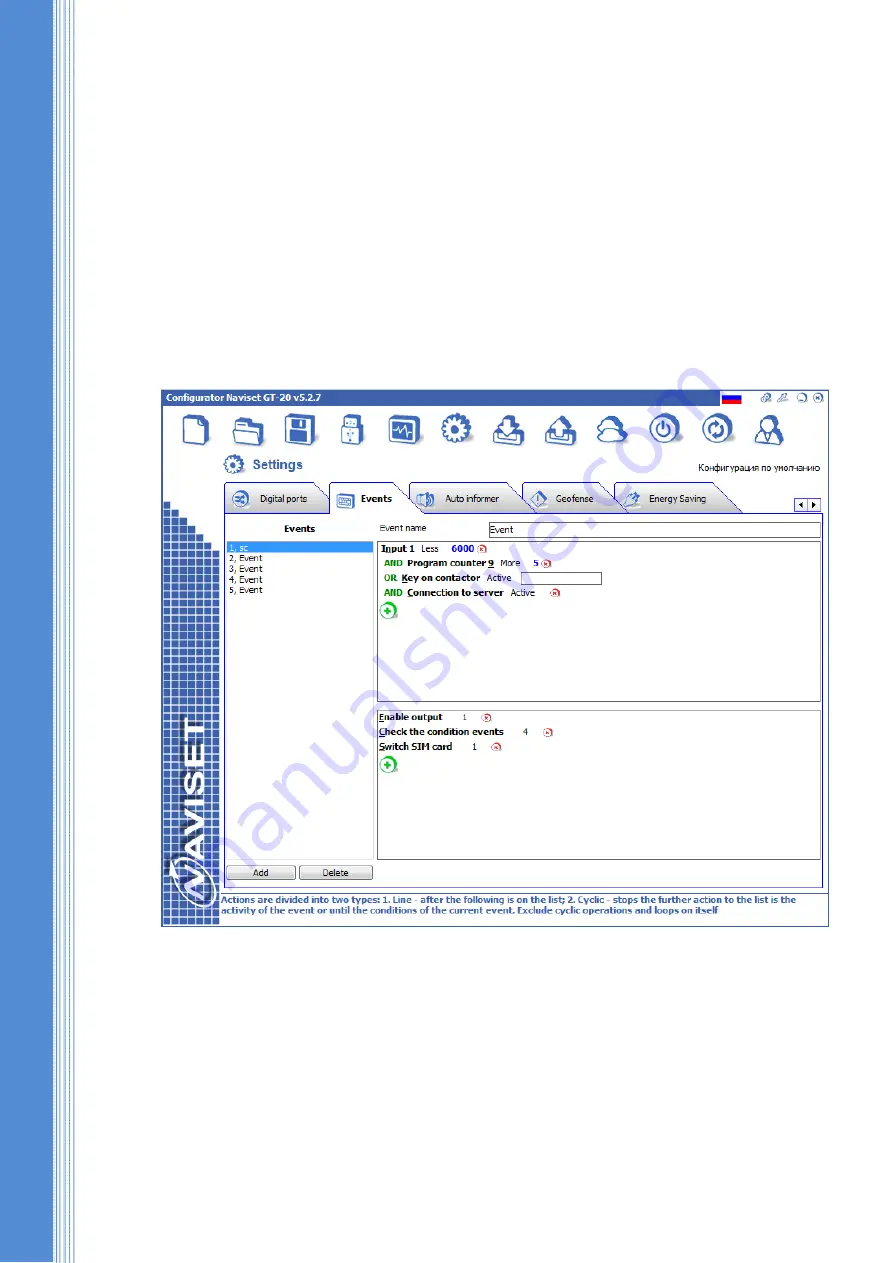
7.2.11.
THE «EVENTS» PANEL
The entire device logic is built on the processing events, which manages the data sending, changes in
the internal conditions of the device, and so on. Using the event the user can specify an individual algorithm for
operation of the device.
An event –is a set of logical conditions under which the action is performed. All conditions can be
combined by the "AND"/"OR" logic. Any parameter of the device(input, timer, acceleration/deceleration,
speeding, geofence input, and many others) can be the source (condition) of the event. Action for the event is
indicated by a choice from the list of available actions (send an SMS with a specified text to a number, turn out,
record the extraordinary packet, change the data transmission channel, start the timer, set a flag and so on).
The device allows recording up to 100 different events that can be interconnected, built in the logical
chains, independently changing static parameters.
All the logic is based on three main recommended algorithms:
1.
The linear algorithm - as soon as all conditions of the event are fulfilled (the event is active), the
device consistently performs all actions. If the event is still active, the actions are repeatedly performed.
2.
The cyclic algorithm – is similar to the linear one, but the check of activities of the current or any
processed event can be put behind the actions. If the checked event is active, the device will wait for its
transition to the passive state, at the same time performing cycle action, and then it will carry out the remaining
actins in the list, if any.
3.
The pending algorithm – is similar to the cyclic algorithm, but carries out all the actions till the
indicator of the "Wait for completion of the event N» function. Then, when the event goes to the passive state,
it will perform all actions after the pointer. Thet is the function is similar to a pause in the action list.







































